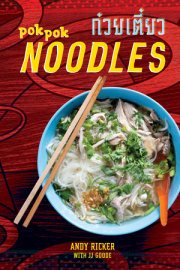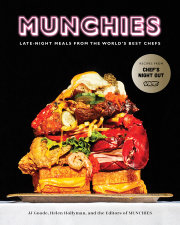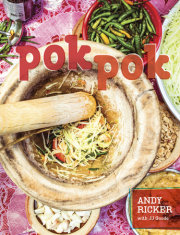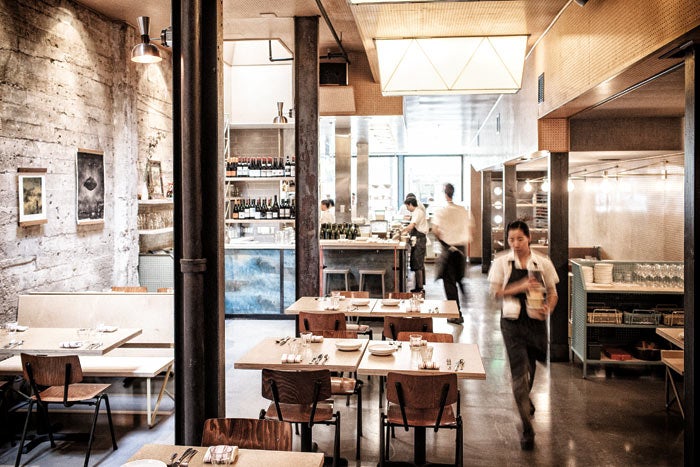INTRODUCTION When we opened State Bird Provisions, there was no menu. Every single dish came around on carts (fashioned for us by a woodworker friend in Seattle). Nicole and I high-fived because we had figured out how to skip writing menus, a task few chefs like. All we had to do was put food on the plate and wait for people to go nuts for it. Let’s just say it didn’t quite work out that way.
At the time, State Bird was even smaller than it is today. Servers barely had room to squeeze their bodies between tables, let alone navigate carts through a maze of chairs, feet, and elbows. Space was so tight near the door, where we had a small bar for people willing to stand, that both carts and diners occasionally had to pass through the open kitchen up front. Cooking during service often feels like a battle. Cooking at State Bird felt like skydiving—we were always teetering between exhilaration and disaster.
To make matters worse, not even lovers of dim sum knew what to make of the carts when dumplings and egg custard tarts were replaced by miniature Dutch ovens filled with pork belly, clam, and kimchi stew; squid stuffed with carnitas; and shot glasses of peanut milk. Customers eagerly quizzed servers about the dishes. “Are those the beets?” they’d ask, pointing to wedges that we’d crusted in rye and set on horseradish-and-ale cream. “What’s in that sauce?” they’d wonder, ogling a plate of grilled bitter greens served with yogurt mixed with smoky Urfa chiles. The typical service interaction had become a conversation. It was awesome. There was just one problem: Customers would frequently let the carts roll away without partaking. They were sensibly waiting to see what their options were before they made decisions—as food got cold and desserts melted. In other words, they wanted a menu.
In fact, “Can I please have a menu?” was the number-one request. So for three days, we handed out menus. And it was the worst. That rapport between servers and diners evaporated. The carts suddenly seemed like an unnecessary, unwieldy novelty. And people tried less food. For weeks, after each service, I’d stay up way too late rethinking the restaurant’s format. Every morning I woke up with some new solution. Inching closer to what State Bird was meant to be.
• • • • •
Finally, after a month, we found a lasting compromise. Diners could order a small selection of dishes from a menu. The rest of the food remained on the carts, tempting people as it rolled by. Most important, we accepted our strange idea as something we loved and wouldn’t ever abandon. So what if it took a bit (okay, a lot) of explaining? So what if it wasn’t practical or efficient or sensible? We had seen the spirit those carts fostered in the dining room, the fun everyone was having—from the diners to the servers to the cooks.
Today, when we look at photos of the early days, we cringe, because we see all the restaurant’s faults. The sad, empty walls. The scruffy floor. The fluorescent lights, which were supposed to create a funky diner feel but created a too-bright dining room instead. We see a space hurried into the world. But we also remember the life the place had then and still has, the vitality that comes from letting your gut guide you, then figuring things out as they come. Long ago, Stuart and I both thought about becoming photographers—we basically fell in love in the darkroom at De Anza College in Cupertino. After taking many poor photographs, I learned that my carefully calculated shots never turned out as beautifully as those I took on a whim, when something caught my eye and I just clicked the shutter.
• • • • •
Thinking back on it, of course, we’re glad we didn’t have the luxury to overthink or decide to go a more conventional route. But at the time, doubts were eating at us. I’d be in the open kitchen, brushing slow-cooked pork ribs with a glaze made from their own juices or pouring sauerkraut broth over duck neck dumplings, when a diner seated across the counter would ask me to explain our unusual ways—just as the diner before him had. Every time they’d ask, I’d get about halfway through my convoluted answer before I started to wonder what the heck we’d gotten ourselves into. I’d have an existential crisis in the middle of service.
Eight months in, everything changed. Well, everything and nothing at all.
Bon Appétit magazine named State Bird the best new restaurant in the country. Within four hours of the announcement, every reservable seat at the restaurant was booked. And before we opened that day, a line of people willing to wait hours for our walk-in spots stretched down Fillmore Street. That line has been there practically every evening since. Later, our online reservation system was hacked, crafty coders nabbing tables seconds after they became available—that’s what you get when you’re an hour’s drive from Silicon Valley. The queue outside generated a mini economy. Through the site TaskRabbit, people hired surrogates to stand in line in order to score a table without waiting themselves. We were so grateful that we started bringing out hot cocoa on chilly nights. Anyone willing to participate in our social experiment deserved a treat.
Such good press was a tremendous gift. And it did something so much more important than just fill up the restaurant. Suddenly, instead of having to explain who we were, we had customers coming precisely
because of who we were. It took away those doubts—or at least most of them. Any lingering worries no longer mattered—we couldn’t turn back anyway. That liberated us. Instead of lying in bed concocting new fixes, I’d wake up every morning thinking, “I’m in love with this restaurant.”
Copyright © 2017 by Stuart Brioza and Nicole Krasinski, with JJ Goode. All rights reserved. No part of this excerpt may be reproduced or reprinted without permission in writing from the publisher.











